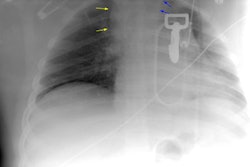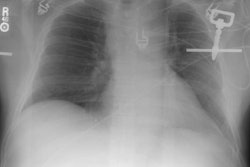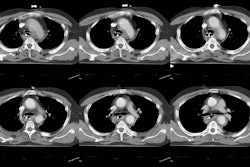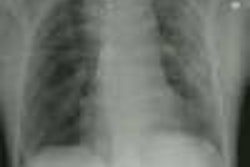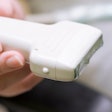Complementarity of blue dye and isotope in sentinel node localization for
breast cancer: univariate and multivariate analysis of 966 procedures.
Cody HS 3rd, Fey J, Akhurst T, Fazzari M, Mazumdar M, Yeung H, Yeh SD, Borgen
PI.
BACKGROUND: The hypothesis that sentinel lymph node (SLN) mapping in breast
cancer patients is optimized by combining blue dye and isotope is reasonable and
intuitive. Despite this, few studies examine in detail the factors contributing
to the success of these techniques, either individually or in combination.
METHODS: During a time period of 21/2 years, 1000 consecutive patients at
Memorial Sloan-Kettering Cancer Center had SLN mapping performed by using both
blue dye and isotope, with preoperative lymphoscintigraphy (LSG). Among the 966
patients with invasive cancer, 12 variables were examined for their correlation
with the success of SLN localization by blue dye, by isotope, and by the
combined method, using univariate and multivariate models. RESULTS: By
univariate analysis, blue dye success was more frequent in association with: a
positive LSG (P = .02), age < or = 60 (P < .0005), a previous surgical
biopsy (P = .03), and an outer quadrant tumor (P < .0005). Isotope success
was more frequent with a positive LSG (P < .0005), age < or = 60 (P =
.004), and intradermal isotope injection (P < .0005). Combined (dye and/or
isotope) success was more frequent when there was a positive LSG (P < .0005),
age < or = 60 (P = .006) and intradermal isotope injection (P < .0005). In
multivariate analysis, blue dye success remained uniquely associated with outer
quadrant tumor location (P < .0005), and isotope success was uniquely
associated with intradermal isotope injection (P = .012). Combined success was
more frequent with a positive LSG (P < .0005), age < or = 60 (P = .033),
and intradermal isotope injection (P = .003). CONCLUSIONS: The five variables
associated with successful SLN localization by blue dye or by isotope overlap
but are not identical. Only three of these, intradermal isotope injection, a
positive LSG, and age < 60, predicted success by the dye-isotope combination
in the multivariate model. Dye and isotope complement each other, and SLN biopsy
for breast cancer should use both.
Ref15 Lymph
Ann Surg Oncol 2001 Jan-Feb;8(1):13-9
Latest in Residents/Fellows
Method quantifies improvement in resident report quality
September 24, 2024
ChatGPT performs poorly on ACR exam for residents
April 24, 2024
How has virtual interviewing impacted residency matches?
March 26, 2024




